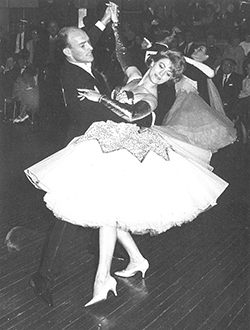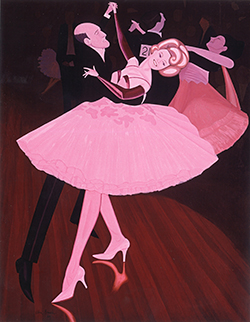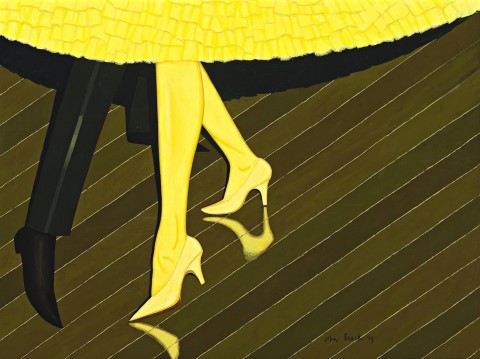YELLOW LEGS, 1969
JOHN BRACK
oil on canvas
73.5 x 99.0 cm
signed and dated lower centre: John Brack 69
Joseph Brown Gallery, Melbourne
State Bank of Victoria, Melbourne
Commonwealth Bank of Australia, Sydney
John Brack, Rudy Komon, Sydney, 8 – 25 April 1970, cat. 11
John Brack, Georges Gallery, Melbourne, 5 – 17 October 1970, cat. 11
Spring Exhibition, 1980, Joseph Brown Gallery, Melbourne, 1 – 10 September 1980, cat. 195 (illus. in exhibition catalogue, pl. 195)
Millar, R., John Brack, Lansdowne Press, Melbourne, 1971, p. 109
Lindsay, R., John Brack: A Retrospective Exhibition, National Gallery of Victoria, Melbourne, 1987, p. 124
Grishin, S., The Art of John Brack, Oxford University Press, Melbourne, 1990, vol. I, p. 226; vol. II, cat. o170, pp. 24, 136 (illus.)
The late 1960s witnessed a major change in John Brack’s career. He had been head of the Melbourne National Gallery School since 1962, overseeing its transformation into a serious training ground for professional artists, but at the end of 1968 he resigned, and for the first time in his life was able to paint full-time. The impetus behind this move was a deal struck with Rudy Komon, the gregarious bon vivant of Sydney art dealers – renowned as much for his appreciation of fine wine and food, as for fine art – in which Brack received a monthly stipend that was offset against annual sales. Entering into this arrangement, Brack followed in the footsteps of Leonard French, who had joined Komon’s stable in 1960, and his good friend, Fred Williams, whose alliance with Komon from 1963 and monthly retainer of £80 – equivalent to the wage he was then earning in a framing shop1 – similarly enabled him to devote all of his time to art.
The shift in Brack’s artistic production was dramatic. While he had maintained a studio behind his office at the National Gallery School, and undertook a handful of commissions during these years, the responsibilities of his role prevented Brack from producing any major new series. Most years, the number of paintings he made could be counted on one or two hands. Similarly, while he was represented in various group exhibitions, including Australian Painting at London’s Tate Gallery (1963) and Australian Painters 1964-66: The Harold Mertz Collection at the Corcoran Gallery of Art, Washington DC (1967), and won the inaugural Gallaher Portrait Prize in 1965, he held only one solo commercial exhibition of new work between 1962 – 68. After his resignation from the Gallery School, Brack constructed a purpose-built studio at home and, in addition to completing two commissions – including the now iconic Barry Humphries in the Character of Mrs Everage, 1969 (Art Gallery of New South Wales, Sydney) – embarked on his most ambitious series to date, twelve oil paintings, three smaller oil sketches, and a group of related watercolours and drawings on the theme of ballroom dancing.
dh190605 (SUPPLEMENTARY IMAGE 1).jpg

The idea for the series had been in Brack’s mind for some time. He was fascinated by the dancers, who, in his eyes, were just like the jockeys he had depicted in the Racecourse series of watercolours more than a decade earlier, ‘[turning] what should be a pastime into serious professional work’.2 For at least two years, he had been collecting visual reference material and subscribing to The Australian Dancing Times, and he planned to attend the 1967 World Ballroom Dancing Championships at Melbourne’s Festival Hall.3 Paintings including The Old Time, 1969 (Private collection, Melbourne)4, follow closely photographs of championship dancers, replicating poses, costumes, hairstyles and even the competitors’ identifying numbers. It is the striking colour palette – brilliant pinks, reds and ‘Tungsten yellow’ – however, which propels these paintings beyond the documentary and into the realm of fantasy, where gloss and artifice, and the notion of performance, prevail. The largest painting in the series, Latin American Grand Final, 1969 (National Gallery of Australia, Canberra), captures the energy and movement of its subject, the angular arms and legs, richly decorated dresses and converging floorboards, all coming together in an ambitious and dynamic composition. As was sometimes his habit, Brack included himself in this picture, a silhouetted but clearly recognisable figure whose partner is out of sight beyond the left-hand edge of the frame.
While the palette of Yellow Legs, 1969 relates to British Modern, 1969 (Art Gallery of Western Australia, Perth), its subject is very close to Legs on a Red Floor, 1969, (Private collection, Melbourne). The focus is on the poised legs of a single dancing couple – especially the shapely yellow female legs referred to in the title – and the voluminous layers of the crinoline skirt. The painting has a photographic feel, both in terms of its depiction of a detail that has been cropped from a larger scene – and study of the series reveals that this composition is in fact a detail borrowed from The Old Time – as well as the emphasis on rendering light and its various visual effects. Conjuring up the theatricality of a spot-lit dancefloor, Brack describes the shining satin trim of the black tuxedo trousers with care, contrasting it against the dark shadow cast by the skirt and the crisp reflection of the yellow shoes in the mirror-like floorboards.
While the colour and movement of competitive ballroom dancing offered rich visual inspiration for Brack’s picture-making, as an artist who was primarily motivated by a desire to understand and illuminate the human condition, it was the way in which it reflected aspects of human behaviour and interactions that he found especially compelling. Acknowledging his interest ‘in the man-woman relationship of the dancers’, the ever-straightforward Brack noted that ‘almost all professional dancing teams are married so it is not so much romantic love as a 50-50 business contract’.5 With this in mind, the images assume a different meaning: collaboration between each dancing couple transforms into competition, and the exaggerated, fixed smiles become masks that only thinly disguise the physical effort behind their elegance and grace. Similarly, the polished floorboards which provide the backdrop to every painting in the series, often flowing vertiginously downwards, seem to emphasise the precariousness of the performance in which we all participate in this dance called life.
dh190605 (SUPPLEMENTARY IMAGE 2).jpg

JOHN BRACK
The Old Time, 1969, oil on canvas, 162.5 x 128.5 cm
TarraWarra Museum of Art collection
Gift of Eva Besen AO and Marc Besen AO
Donated through the Australian Government’s
Cultural Gifts Program 2008
The ballroom dancing paintings were first exhibited at Rudy Komon Gallery, Sydney, in April 1970 and later that year, at Georges Gallery in Melbourne. Writing in the catalogue of the Melbourne showing, Brack’s friend (and author of the monograph published in 1971), the artist Ronald Millar, wrote perceptively about the series, identifying his core motivations and the thematic continuation that it represented within his oeuvre:
Brack’s lissom ballroom dancers … re-state in more indirect terms than before all his longstanding preoccupations. Obsessions about states of uneasy poise and about vulnerability … about physical and psychological make-believe, and about realities behind facades. About people being alternately attracted and repelled, together intimately but separated in motive and intention. About the rituals of art and life … his definitive Dance of Life comes in a long line from Goya, Munch, Seurat, Degas and the Flemish Primitives … an amalgam of emotion and discipline’.6
1. Mollison, J., A Singular Vision: The Art of Fred Williams, Australian National Gallery & Oxford University Press, Canberra, 1989, p. 84
2. John Brack quoted in Dunstan, K., ‘A Place in the Sun: Reporting a comeback, cha-cha-cha’, Sun, 9 October 1970, p. 9
3. Helen Brack recalls that he changed his mind at the last minute and didn’t attend the championships. See Grant, K., John Brack, exhibition catalogue, National Gallery of Victoria, Melbourne, 2009, p. 120
4. Sold in 2007 for $3.36 million, The Old Time, 1969, realised the highest price ever paid at auction for a painting by John Brack.
5. John Brack quoted in Dunstan, K., op.cit., p. 9
6. Millar, R., Foreword, John Brack, Georges Gallery, Melbourne, 1970
KIRSTY GRANT
